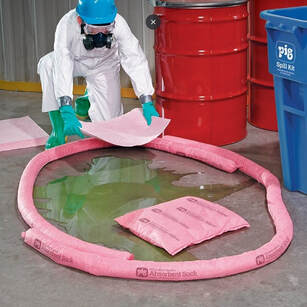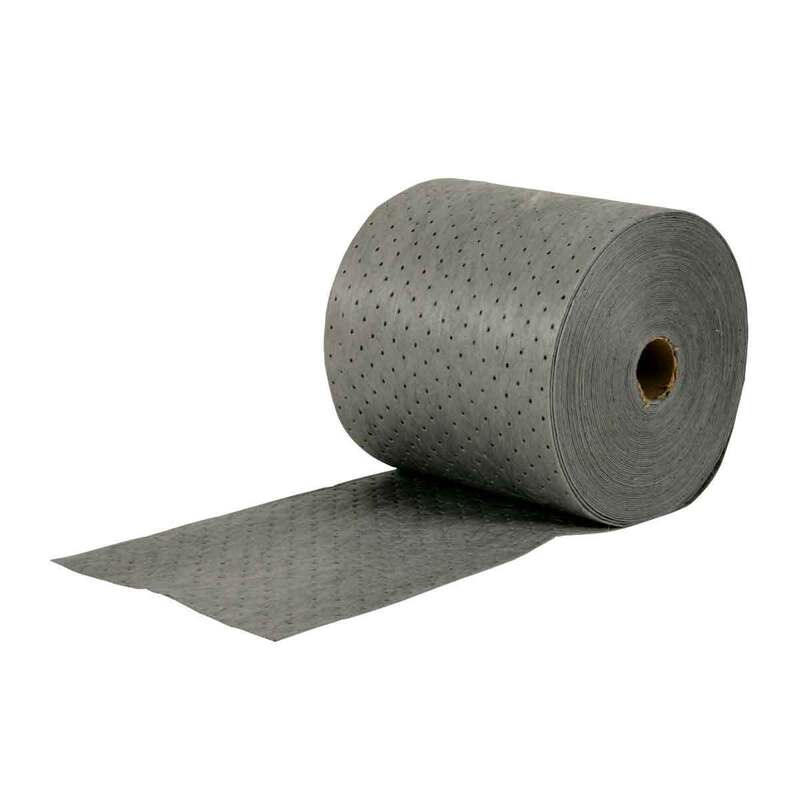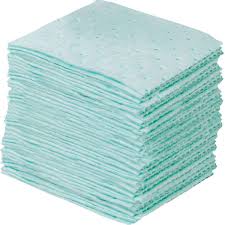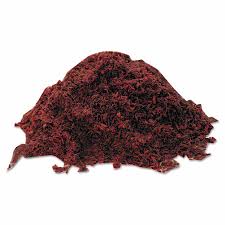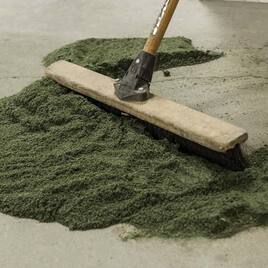SORBENTS:
Sorbents are insoluble materials or mixtures of materials used to recover liquids through the mechanism of absorption, adsorption, or both. Absorbents are materials that pick up and retain liquid distributed throughout its molecular structure causing the solid to swell 50% or more. Adsorbents are insoluble materials that are coated by a liquid on its surface, including pores and capillaries, without the solid swelling more that 50%. In order for sorbents to be useful in combating oil spills, they need to be both oil-attracting (oleophilic) or water-repellent (hydrophobic).
BOOMS, ROLLS & SOCKS:
|
|
Booms:
These are used to control the spread of oil to reduce the possibility of polluting shorelines & other resources. Booms help contain the spread of oil. There are several different types:
|
|
Absorbent Socks:
These are typically tubular in shape and are used to clean up and absorb both oil- and water-based liquids. They are flexible and conform to almost any shape or pattern to surround spills. Available options:
|
|
Rolls:
Sorbent rolls contain perforated pads that are used to absorb both water- and oil-based liquids while repelling water. They are commonly used to clean up spills such as coolants, solvents, oils, paints, grease, and other water-based liquids. Options include:
|
SPILL PADS:
FLOOR SWEEP & SORB-ALL:
|
Red Floor Sweep:
This is an oil based compound for use on concrete and unfinished wood floors. This product works great for dust control and is made of a gentle, nonabrasive format that prevents scratching and scuffing on hard floor services. Typically sold in 50-lb bags but larger quantities available. |
|
Other Sweeping Compounds:
These are tacky, powdery materials that can be scattered over an area to be cleaned and then swept up again to remove dust and waste. They are typically either water soluble or oil-based depending on the material to be cleaned.
|
GRANULAR ABSORBENTS:
Granular absorbents are multi-purpose sorbents that are ideal for spill cleanup, lab packing and stabilization of free liquids. These loose absorbents are sprinkled directly on top of liquid and soak up the spill. There are a wide variety of materials available from vermiculite to clay based absorbents.
|
|
Material Options Include:
|
SECONDARY CONTAINMENT:
Secondary Containment is any system, device or control measure that is used to stop a discharge from leaving a specified area. The EPA and OSHA have several laws about secondary containment of hazardous materials which your plant needs to follow. Let us help you with all your secondary containment needs! Available options include:
|
|
|
CUSTOM SECONDARY CONTAINMENT:
|
We also offer custom metal fabrication for secondary containment platforms. Please check out some of our previous custom metal fabrication projects here or email us for consultation, on-site measurement, and pricing.
|
|
Note: Website pricing is subject to change based on availability, customization, and market rates. Quotes good for 30 days unless otherwise noted.
|


